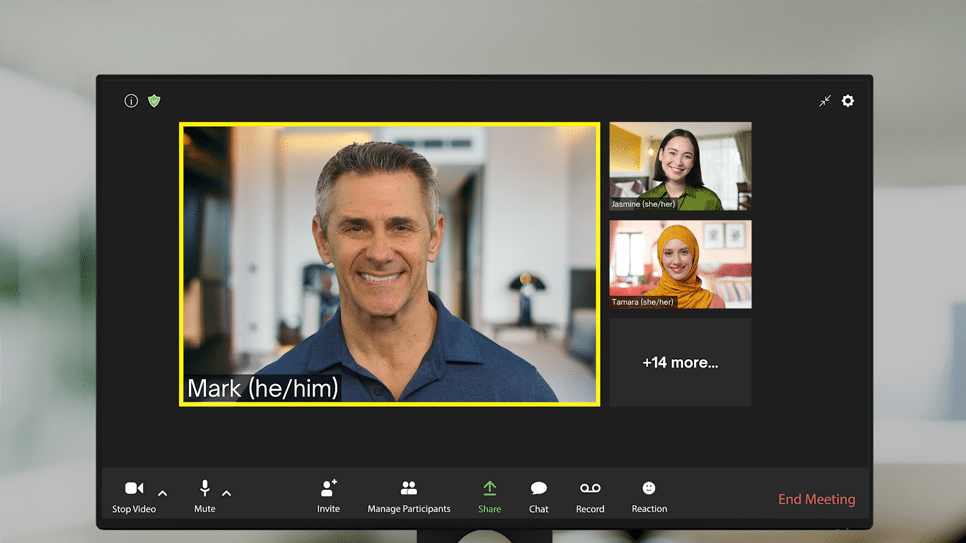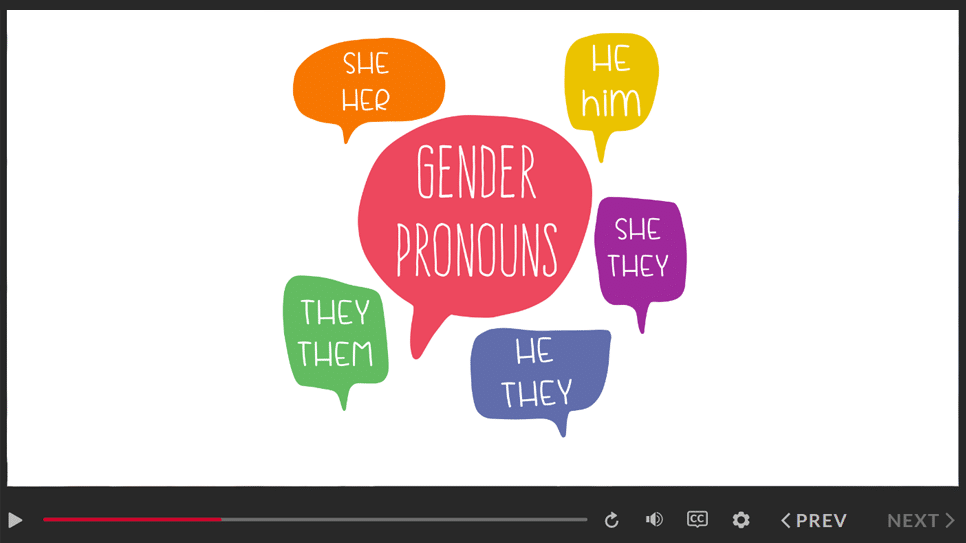
Inclusive Language Training
Encourage employees to use inclusive language–fostering respectful and effective communication in the workplace.
Course description
Traliant’s Inclusive Language training is a 15-minute course that helps employees understand how to use inclusive language and navigate workplace communication with sensitivity and respect. Through interactive exercises and real-world scenarios, participants learn to recognize and eliminate exclusionary language, fostering a culture where all voices are heard and valued.
ONLINE TRAINING
Inclusive Language Training

This training covers these topics and more:
- How to Spot Non-Inclusive Language and Replace it with Inclusive Alternatives
- When is Gendered Language Appropriate and When is it Not
- Use of Preferred Names and Pronouns
- What to Do When You Make a Mistake
- When to Reference Personal Characteristics like Race, Gender and Age
- Resources for Checking Bias in Writing
THE TRALIANT DIFFERENCE
Compliance you can trust.
Training you will love.

Legal expertise
Our in-house legal team monitors the latest laws, rules and regulations, so you don't have to. You can rest assured that our courses are continuously compliant.

Brilliant training
With cinematic-quality videos produced by our Hollywood-based team, your employees will love our customizable, interactive, story-based training.

Valued partnership
Our main focus? It’s all about making your job easier. We do that with unmatched responsiveness and seamless deployment, dedicated to driving your success.

Meaningful impact
We don’t just deliver brilliant training, we help you create meaningful impact by broadening your employees' perspectives, achieving compliance and elevating culture.
KEY FEATURES
Why you'll love our training
Compliance expertise
Traliant's in-hour legal expertise ensures training is accurate and kept up-to-date with any regulatory changes.
Accessible to users with disabilities
Traliant provides an inclusive experience for all users, including those with disabilities, by going beyond Section 508-C standards and offering WCAG 2.1 AA.
Story-based learning
Our story-based approach blends leading instructional design with Hollywood talent to produce engaging, interactive and nuanced training.
Course administration
Traliant makes it simple to roll out training to your workplace and provide technical support directly to your employees at no additional cost.
Course customizations
Tailor courses to include your logo, relevant policies, workplace images, and more. Traliant can even customize the course with scenarios that take place in your own workplace environment.
Translations
Training is available in English, Spanish and is supported in over 100 languages.
COMPLIANCE EXPERTISE
Your partner in training compliance

Uniquely qualified in-house compliance team
Our exceptional in-house Compliance Advisory Team is led by Michael Johnson, Chief Strategy Officer and former U.S. Department of Justice attorney who has provided training and guidance to organizations like the Equal Employment Opportunity Commission, Google, the United Nations, and the World Bank.

Keeping you compliant, effortlessly
Keeping up with the complex web of employment laws — especially if your workforce spans multiple states — can be tricky. That’s why we offer a streamlined training solution that ensures you stay compliant with federal, state, and local regulations, so you can focus on what matters most: your team.

Simplifying your policies and handbooks
Crafting an employee handbook that meets legal standards can be daunting. Let us ease the burden. We help you navigate regulatory changes to ensure your policies and handbooks not only comply with the law but also reflect industry best practices.
What to consider when choosing the most effective inclusive language training

- Promote a positive and respectful work environment: Inclusive language fosters a culture where everyone feels valued and respected, creating a more positive and productive workplace.
- Improve communication: Using inclusive language ensures that communication is clear and effective for everyone, regardless of their background or identity.
- Build trust and relationships: Inclusive language shows that you respect and value diversity, which can help to build stronger relationships with colleagues, clients, and customers.
- Empower employees: Training provides employees with the knowledge and skills to use language that is inclusive and respectful, which can build confidence and create a sense of belonging.
- Strengthen your organizational culture: Training helps to build a culture of respect, understanding, and inclusivity.
- Promote a positive work environment: Inclusive language can contribute to a more positive, productive, and welcoming work environment.
- Non-inclusive: "Manpower" or "man hours."
- Inclusive: "Workforce" or "labor hours."
- Non-inclusive: "Chairman" or "policeman."
- Inclusive: "Chair" or "police officer."
- Non-inclusive: "He or she" or "his or her."
- Inclusive: "They" or "them."
- Be mindful of your words: Think carefully about the language you use, and avoid using stereotypes or generalizations.
- Ask for feedback: Ask colleagues for feedback on your language to ensure it is respectful and inclusive.
- Learn about different cultural perspectives: Understand how different cultures and identities shape language and communication styles.
- Use gender-neutral language: Use language that is not specific to one gender, such as "chair" instead of "chairman."
- Avoid making assumptions: Avoid making assumptions about someone's gender, race, ethnicity, or other personal characteristics.
- Provide training: Provide regular inclusive language training to all employees.
- Encourage feedback: Create a culture where employees feel comfortable giving feedback on language that is offensive or inappropriate.
- Develop written guidelines: Create a set of written guidelines that define expectations for inclusive language.
- Be consistent: Consistently use inclusive language in all written and spoken communication.








